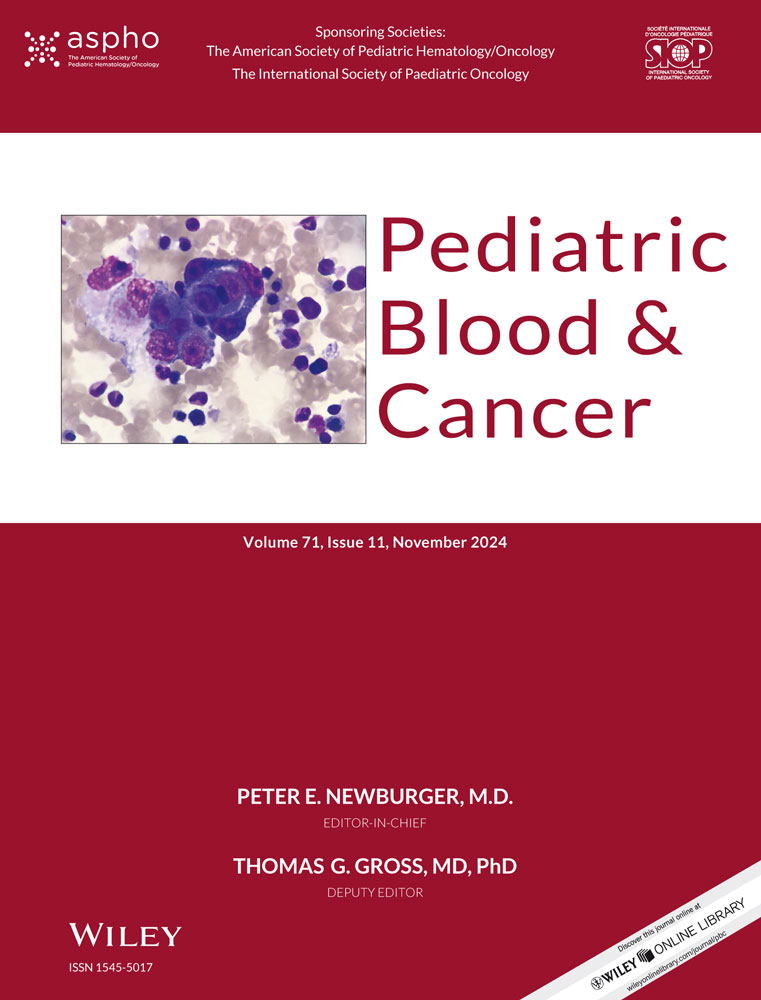LETTER TO THE EDITOR
Management of severe hemolytic disease of the fetus and newborn due to maternal anti-Rh17: Using incompatible blood
Henna Butt,
Corresponding Author
Henna Butt
Pediatric Hematology, Children's National Hospital, Washington, District of Columbia, USA
Correspondence
Henna Butt, 111 Michigan Ave NW, Washington, DC 20010, USA.
Email: [email protected]
Search for more papers by this author Colleen Rich,
Colleen Rich
Department of Pediatrics, Children's National Hospital, Washington, District of Columbia, USA
Search for more papers by this author Jennifer Webb,
Jennifer Webb
Pediatric Hematology, Children's National Hospital, Washington, District of Columbia, USA
Search for more papers by this author
Henna Butt,
Corresponding Author
Henna Butt
Pediatric Hematology, Children's National Hospital, Washington, District of Columbia, USA
Correspondence
Henna Butt, 111 Michigan Ave NW, Washington, DC 20010, USA.
Email: [email protected]
Search for more papers by this author Colleen Rich,
Colleen Rich
Department of Pediatrics, Children's National Hospital, Washington, District of Columbia, USA
Search for more papers by this author Jennifer Webb,
Jennifer Webb
Pediatric Hematology, Children's National Hospital, Washington, District of Columbia, USA
Search for more papers by this author
First published: 11 August 2024
No abstract is available for this article.
| Filename |
Description |
| pbc31264-sup-0001-SuppMat.png192.1 KB |
Supporting Information |
Please note: The publisher is not responsible for the content or functionality of any supporting information supplied by the authors. Any queries (other than missing content) should be directed to the corresponding author for the article.
REFERENCES
- 1Mani A, Mishra G, Kulkarni S, Gupta D. D–phenotype due to RHD-RHCE hybrid transcript in a case of severe haemolytic disease of newborn with anti-Rh17 (Hro) antibodies. Transfus Med. 2021; 31(5): 383-386. doi:10.1111/tme.12799
- 2Dajak S, Ipavec N, Cuk M, et al. The outcome of hemolytic disease of the fetus and newborn caused by anti-Rh17 antibody: analysis of three cases and review of the literature. Transfus Med Hemother. 2020; 47(3): 264-271. doi:10.1159/000503012
- 3Floch A. Maternal red blood cell alloimmunisation Working Party, literature review. RH blood group system: rare specificities. Transfus Clin Biol. 2021; 28(3): 314-320. doi:10.1016/j.tracli.2021.04.007
- 4Hirose M, Nakanishi K, Kaku S, et al. Fetal hemolytic disease due to anti-Rh17 alloimmunization. Fetal Diagn Ther. 2004; 19(2): 182-186. doi:10.1159/000075147
- 5Singh A, Francis HW, Smith PB, Clark RH, Greenberg RG. Association between hyperbilirubinemia and hearing screen failure in the neonatal intensive care unit in infants born preterm. J Pediatr. 2021; 231: 68-73. doi:10.1016/j.jpeds.2020.12.059
- 6Maisels MJ, McDonagh AF. Phototherapy for neonatal jaundice. N Engl J Med. 2008; 358(9): 920-928. doi:10.1056/NEJMct0708376
- 7Rennie J, Burman-Roy S, Murphy MS, Guideline Development Group. Neonatal jaundice: summary of NICE guidance. BMJ. 2010; 340:c2409. doi:10.1136/bmj.c2409
- 8Legler TJ. RhIg for the prevention Rh immunization and IVIg for the treatment of affected neonates. Transfus Apher Sci. 2020; 59(5):102950. doi:10.1016/j.transci.2020.102950
- 9Shahverdi E, Moghaddam M, Abolghasemi H. First report of the rare RhCE-depleted D–phenotype in sixteen people of Iranian origin. Vox Sang. 2019; 114(3): 256-261. doi:10.1111/vox.12738




